Pipaldanda: A village perspective
The small village of Pipaldanda sits nestled into a ridge a few folds west from Chautara Bazaar, about 40 minutes distance by foot. I got a late start on my hike over to Pipaldanda, never anxious to start a walking in the heat and a little apprehensive of the day to come. I hadn’t contacted any one ahead of time, and – I didn’t know what I would find. The temperature ticked into the mid-90s despite a bank of dark clouds on the horizon. The monsoon had brought naught but a tease so far, providing taunting clouds but few showers. My trip to Pipaldanda had dual purpose: to see the extent of damage to the schools there and what sort of transitional classrooms they had obtained (my Learning Planet hat), and to check in with the families who will potentially benefit from the funds my friends and I had raised.
I set off from my family’s house, up and over the northern ridge of Chautara Bazaar and – my jaw dropped to see that our favorite tea shop was still standing. In text messages we had referred to as “the tea shop with a breeze” because it had generous windows through which we soaked up both the wind and views of bright green rice terraces below. The shop was a rickety, pieced-together structure of scrap wood and tin, propped up on the slope by tall wooden stilts – the sort of thing that seemed to barely stand under normal circumstances let alone an earthquake. Not only was it still standing, but it was thronging with business, serving daal bhaat to the mass of aid workers who’d set up camp nearby. It just goes to show that some things defy logic.
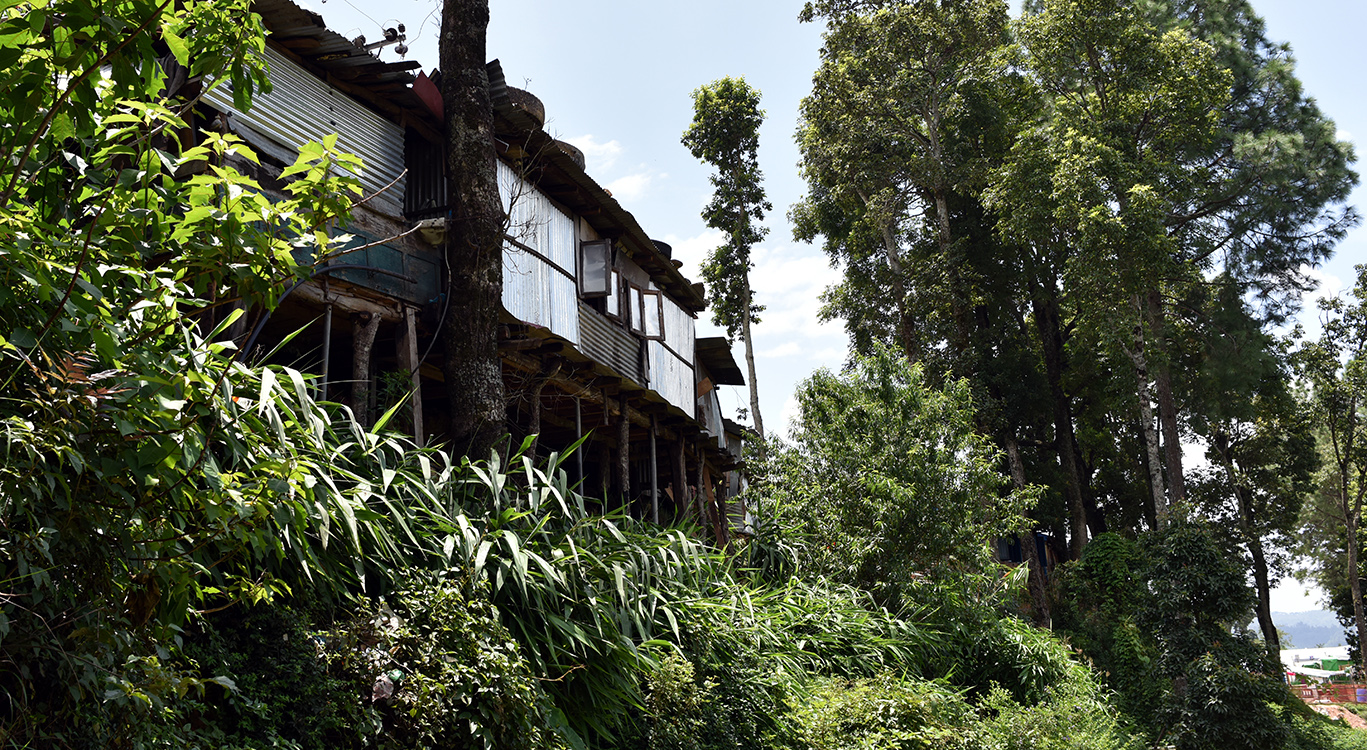

– – –
The first part of Pipaldanda greets you as you round a sharp corner in the ridge. A few shops once lined the road here, leading to a small plateau where the main school sits. But all the shops were gone, reduced to piles of stone and mud. The school buildings, however, appeared to stand strong – from a distance anyway. The place was eerily empty. Finding the main school gate locked, I scampered over a low stone wall into the yard. As with many Nepali schools, the buildings here had formed a large U shape of classrooms with a central play space in the middle, which was now occupied by temporary classrooms made of wood, tin and chicken wire.
Now up close, I could see that the original school buildings that had looked sturdy from afar were in fact reduced to skeletons: naked steel structures holding up the roofs with window frames hanging along the beams, the brick and mud walls completely gone. The scene was rather impressive, actually: one classroom block had a giant crack down the length of its foundation, with the footings sliding several feet down the hillside – and yet the steel frame remained standing firm and tall, despite being bent out of shape. This model demonstrates a concept that Learning Planet is playing with in our permanent school re-design: separate structural systems for the walls and roof, such that even if the walls fall down the roof should not. Only we’re exploring a natural alternative: bamboo.


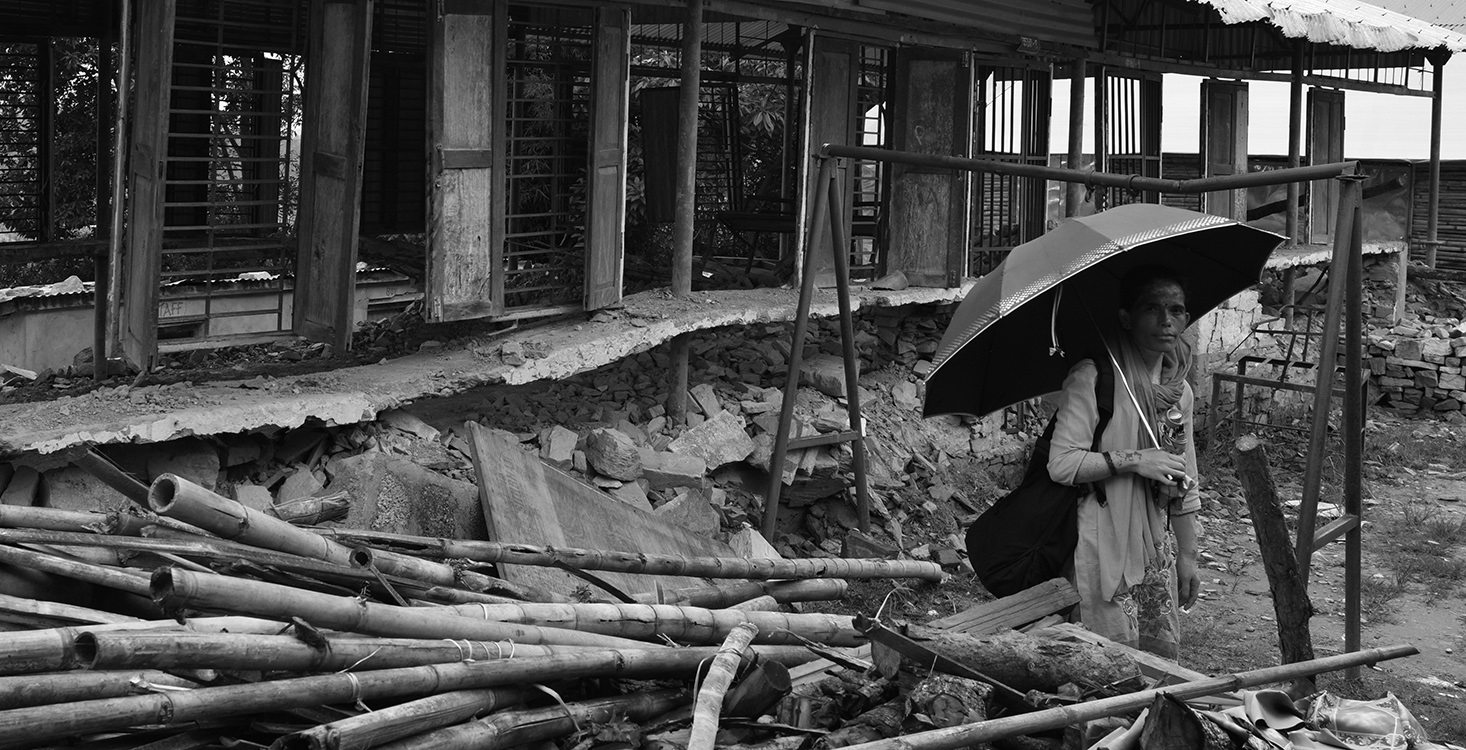
– – –
The main village of Pipaldanda consists of 22 houses; all were either fully or mostly collapsed during the earthquake. I was told that 17 people died in this village alone. The village now consisted of a patchwork of blue, orange and white tarps, intermixed with corrugated tin shacks and a few tents between piles of stone rubble. The nicer tarps and tents came from International aid organizations, but there weren’t enough for everyone. The make-shift tin-shacks were self funded. I had seen the general hardware supply shops across the bazaar selling corrugated metal sheets like hotcakes, filling the floor sand stoops with stacks of them. They provide a perfect demonstration of basic economics: with high demand came a increased supply – and an increased price.
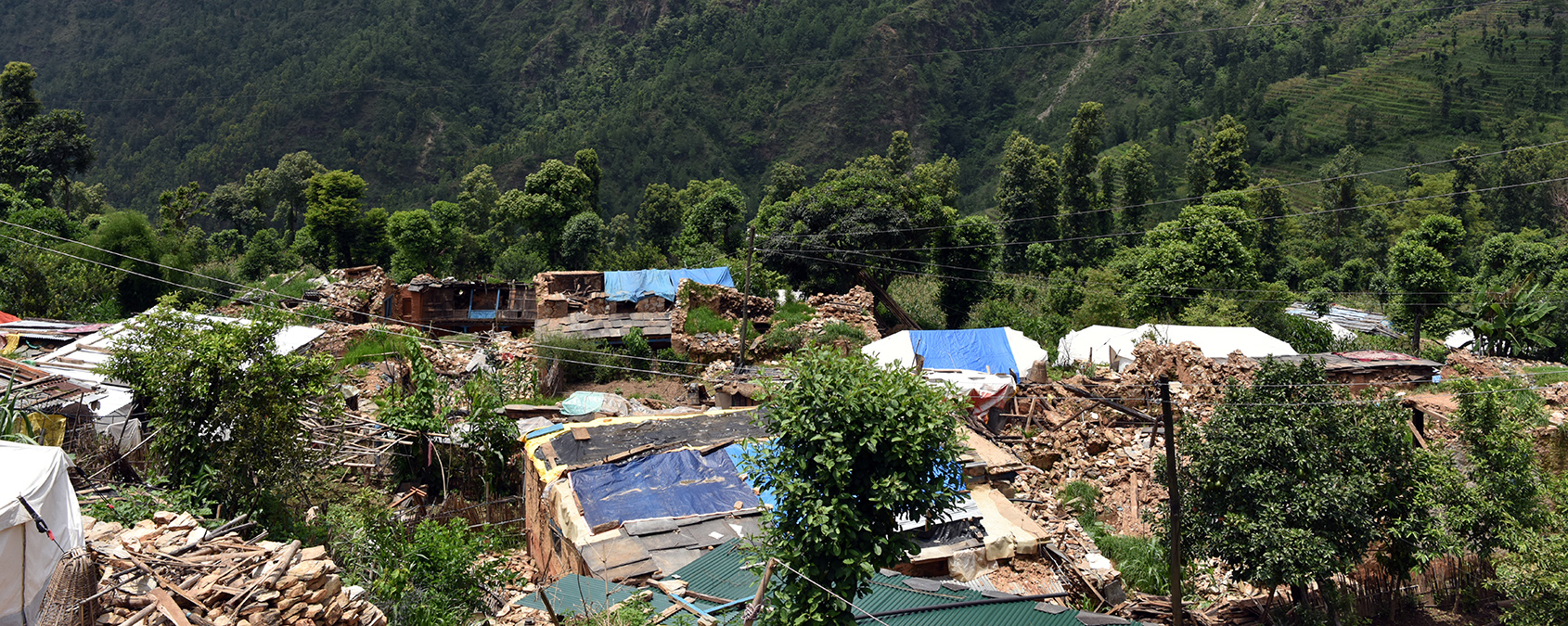
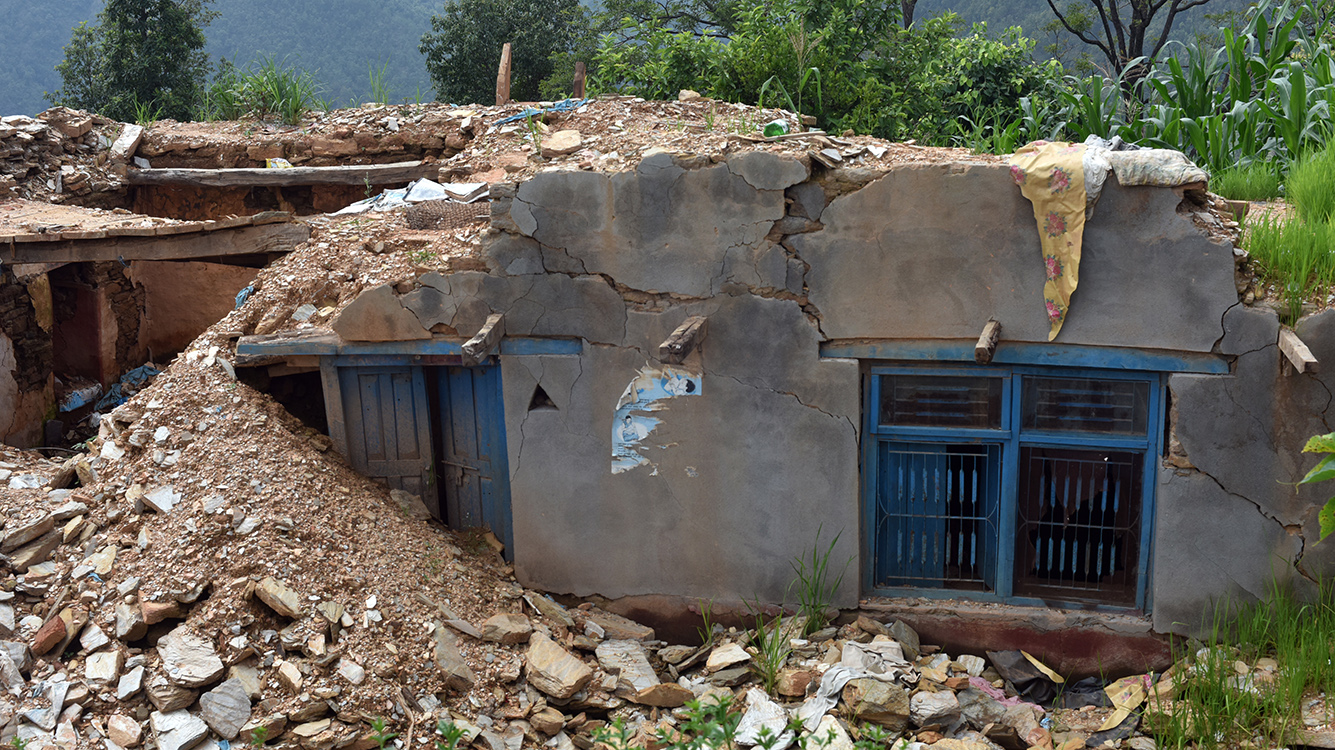

A village volunteer I had met along the road, Mina, invited me into her tin shack for tea. It didn’t take long for the sweat to bead up on her upper lip. “Garme chha” – it’s hot, she told me, “But it’s peaceful at night.” The space was well kept, items tidily arranged, floor swept, dishes neatly stacked. The compact earth floor looked skillfully made; they used large shale pieces along the edges, like a shower lip, to keep water out. Most likely the shale pieces were salvaged from the roofing of their collapsed home. When I asked where the tin came from, Mina told me that they had purchased it themselves. The government promised them 15,000 NPR (~$150 USD) toward rebuilding but – “Kaasari dine?” – how will they get it to me?, she posed. And what good will it do? Her modest tin shack cost them 25,000 NPR ($250). 6 people slept there. “We cook here and we sleep here, that’s it.” In the very least, it successfully keeps out the rain. “For now we have to make the best with what we have. Life goes on.”
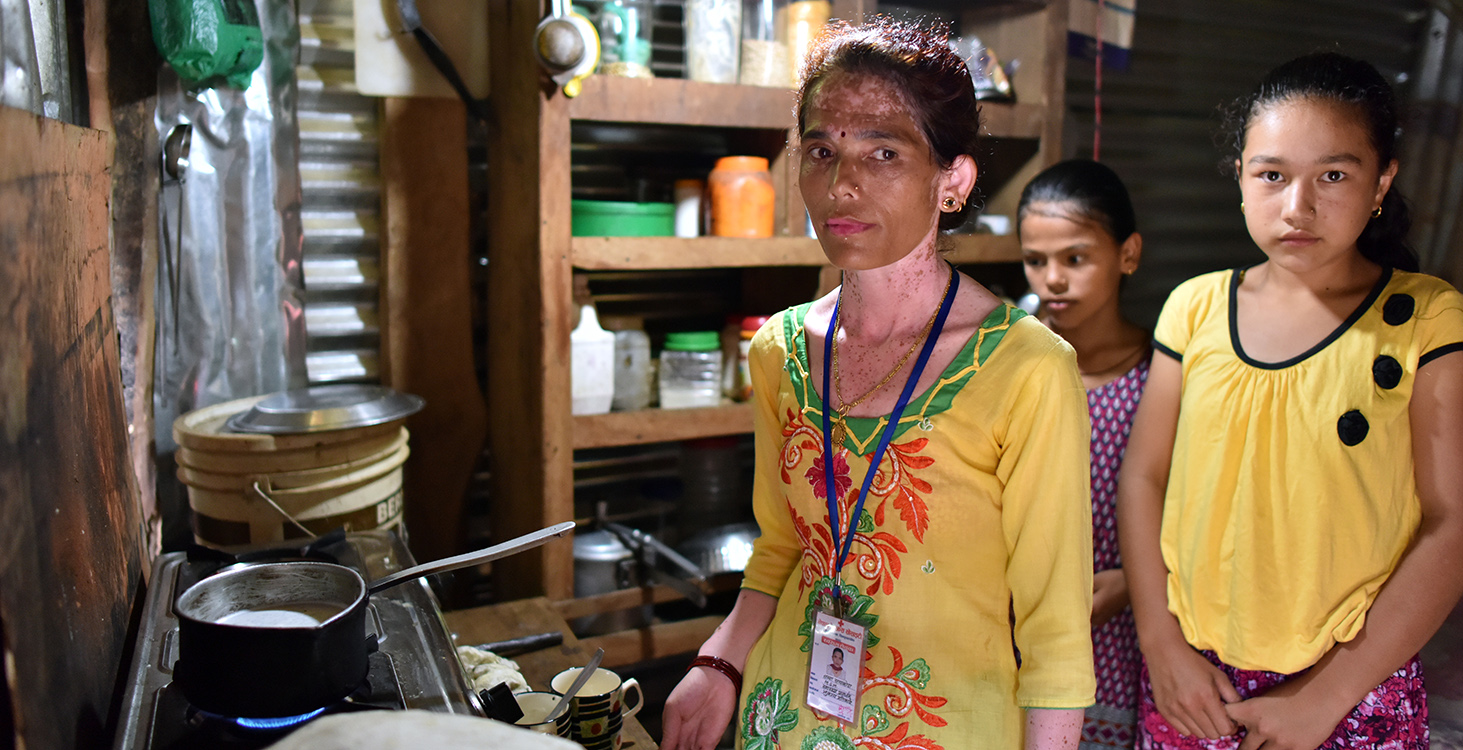
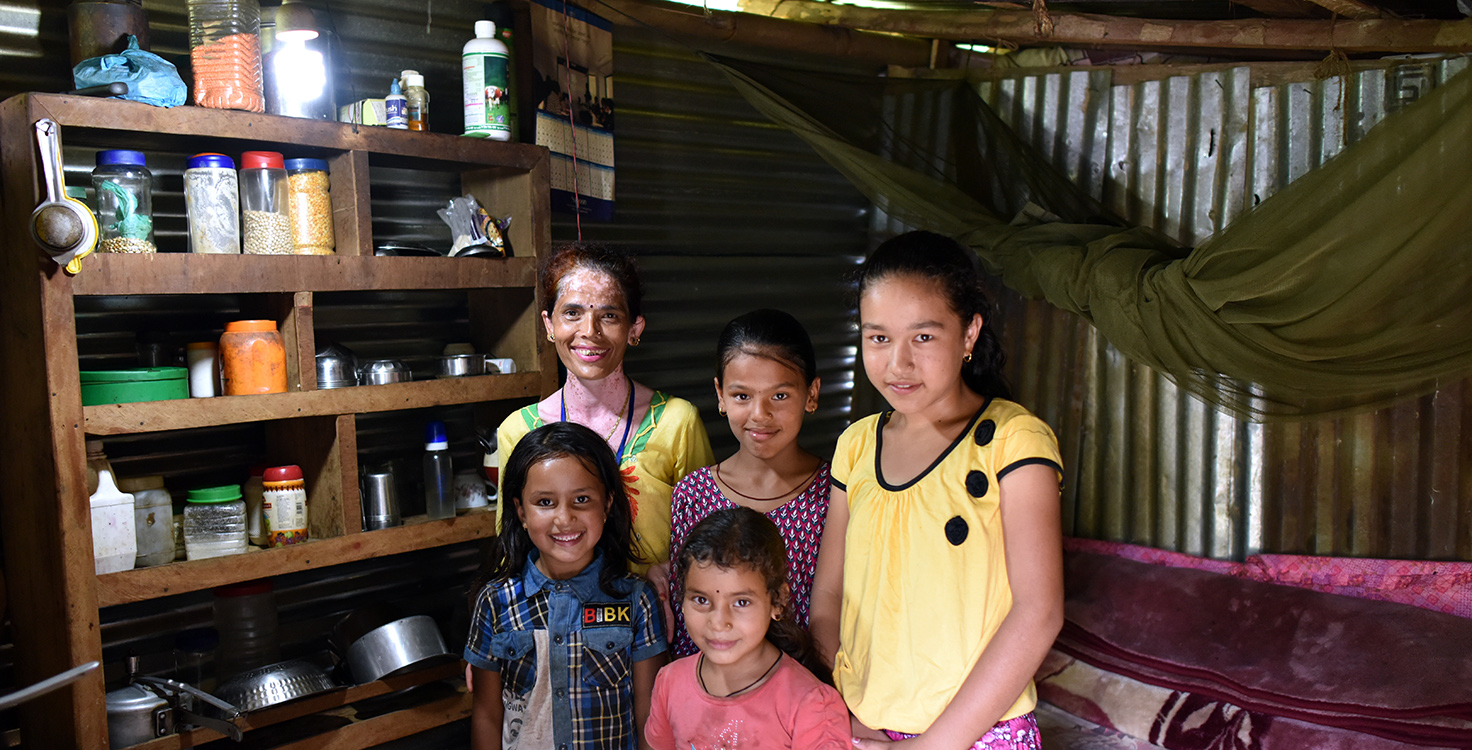
For as dire as that situation sounds, Mina handed me the cup of tea with a smile, happy to have a guest in her modest space. She was volunteering locally for the Red Cross as a community mobilizer, for whom she had gathered a large group of local women and children to attend a WASH program. WASH is an international development acronym for “Water, Sanitation and Hygiene.” Due to start half hour later, around three dozen villagers had gathered at the village Chautara – the resting place beneath a large Pipal tree (thus the village name). The children played their games, the women smiled through their gossip and – life seemed like a slightly more strained version of their usual reality. As with the other large INGOs, I’d seen the Red Cross tent camp in the bazaar. A large outfit, doing a huge amount of good providing medical services in their tent hospital and distributing water storage and sanitation supplies in the surrounding villages.
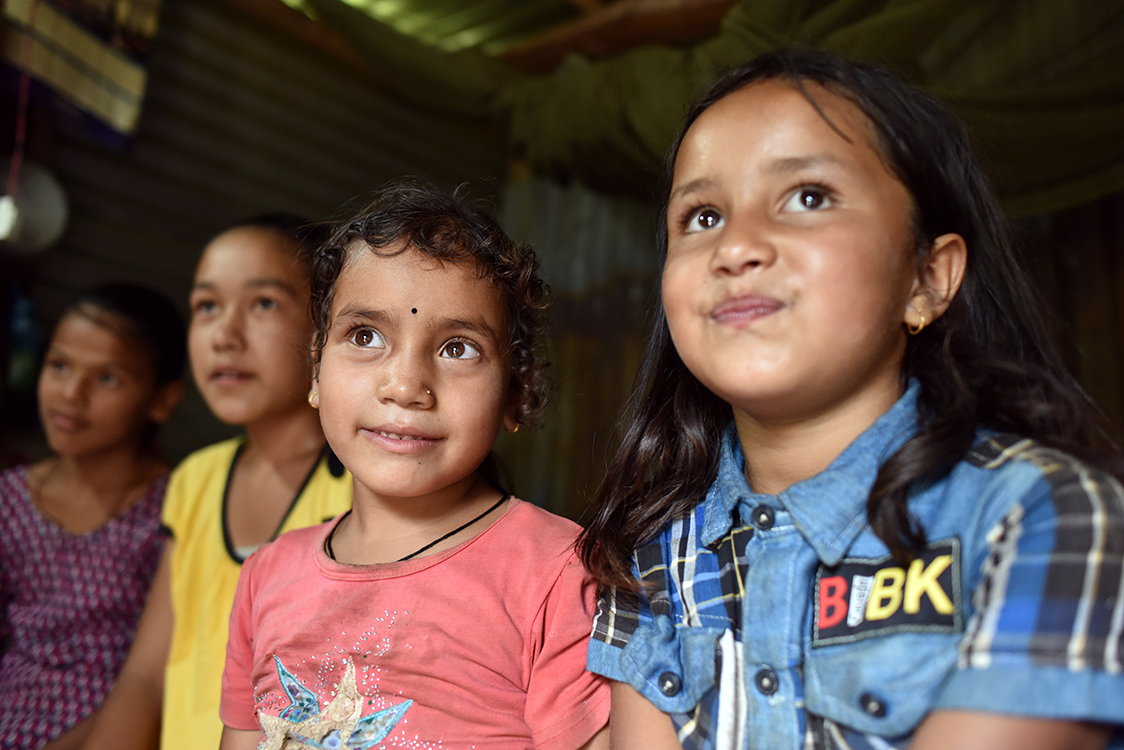
Over 2 years working in Nepal, I’d seen my fair share of WASH programs, so I ducked out, instead heading down the hill to seek out another Peace Corps Volunteers first host family. As these things go in small places, I happened to run into her host mom on the main path. Binu Sapkota was in her two story stone home when the earthquake hit. The building collapsed rapidly around her, trapping her and three other family members inside faster than they could escape. She was stuck below her waist, her torso forced into an L shape, buried in the rubble for 2 hours before being dug out. She described her face caked in blood and dust, one leg completely unusable. She spent the next month in the tent hospital set up by the Red Cross – the whole month. When she’d returned to village, she found her husband had constructed a shack for them out of salvaged material from the rubble. She was walking again, with a very slight limp. In the Nepali context, “walking again” means traversing the hillsides, so – the level of her recovery, just two months later, was quite miraculous.


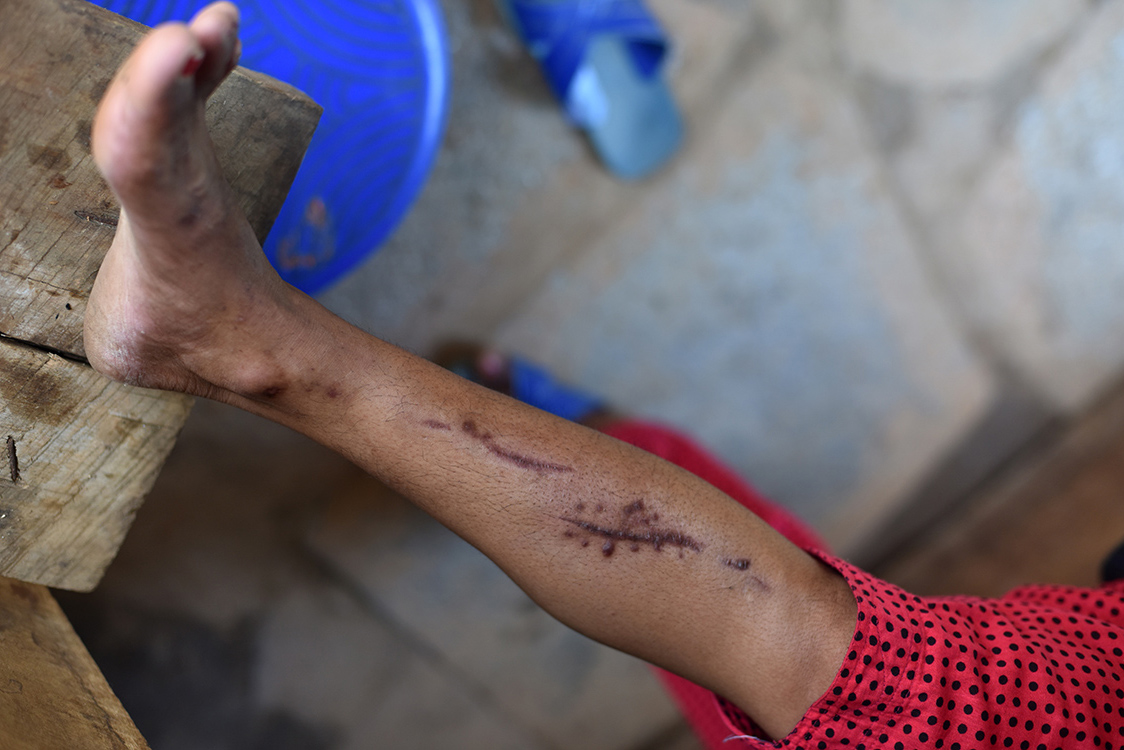
As with Mina, Binu defaulted on hospitality, inviting me to her current abode for a cup of tea. Her shelter was modest but effective; the main structure had three rooms: a central living space that she and her husband also slept in at night, a small room for grandma, and another room for food storage. Specifically the store room held about a dozen large sacks of rice – last year’s harvest. A secondary semi-open air shelter served as the kitchen. Binu told me both kept the water out fine, but – the bugs were a real issue when trying to cook at night (the light draws them in swarms, not just handfuls).
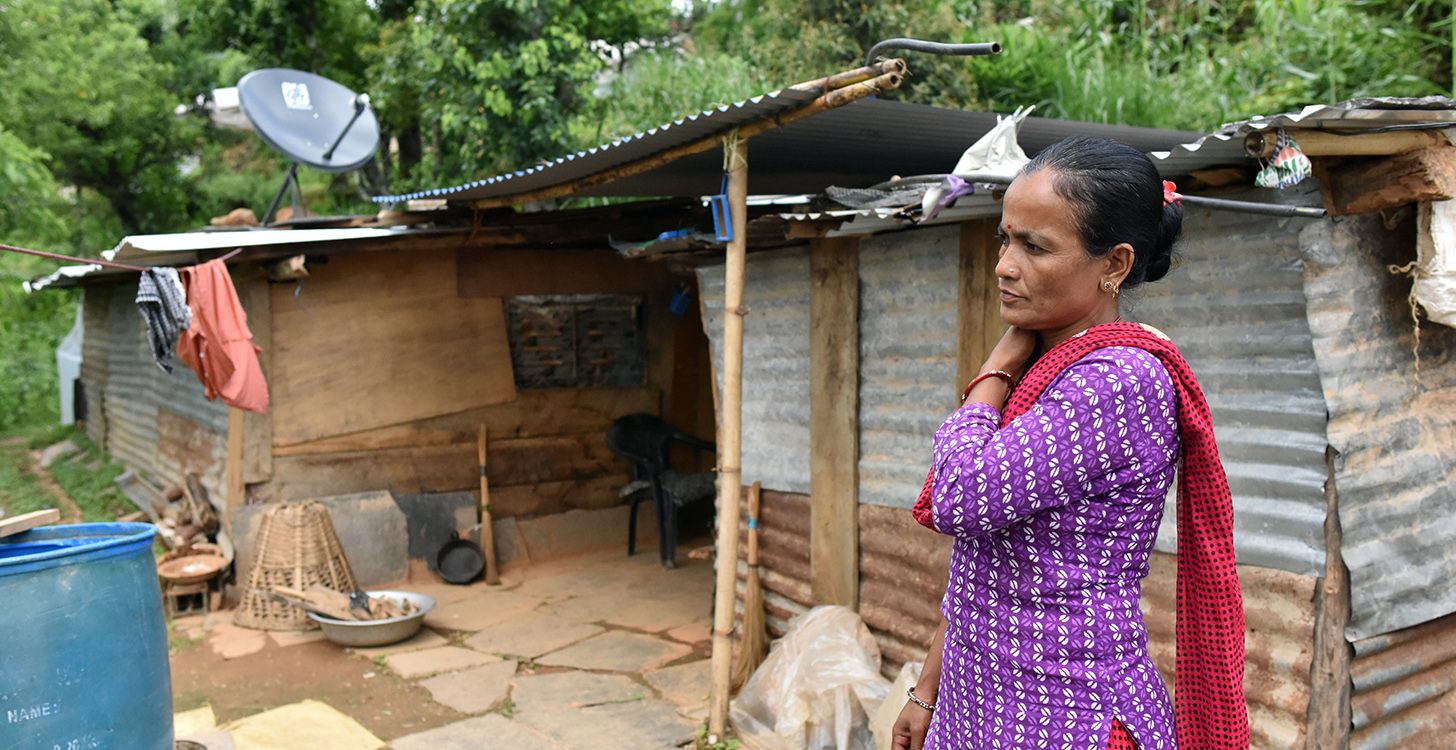

I sipped my tea from a bench outside the kitchen. Having salvaged so much of their rice store meant that Binu and her family were not in dire need of their staple food at present. But Binu was more alarmed for next year: they had yet to begin planting their rice fields – and not for lack of labor, but for lack of water. This year monsoon had come late to Sindhupalchok, a blessing for those who needed to build shelter or stuck living under flimsy tarps, but a curse for the subsistence farmers. With all the international focus on Nepal fixed on the damages caused by the earthquake, someone unfamiliar with the place may have a hard time establishing a sense of what the situation was like prior to it, or to tease out the compounding (but unrelated) issues locals are facing now. The late monsoon is a separate frustration, a different challenge, for them to face – and one that’s been creeping up on them slowly over recent years.
But Binu, as with so many of the locals I spoke with, was starkly aware of both – and also aware that they need more than short-term fixes. “We need more than money to rebuild,” she explained,”We need engineers to teach us how to do it properly.”
– – –
As I walked back toward the bazaar, I noticed one mud structure still standing along the road. Looking closer I realized it hadn’t survived the quake but was freshly built – simply built, with mud and stone for walls, salvaged wood for door and window frames, and new tin for the roofing. On first siting a critical mind may express frustration and disbelief. I mean – why on earth would they build back in precisely the same manner as the buildings that had fallen over? One may question: had they learned anything at all? But these are reactions based on initial appearances. Observing a bit more deeply, I could see that the space was being used as a pasal, or small road-side snack shop, and that the didi inside sat next to the doorway. This meant nobody was slept inside overnight. Additionally, the structure was only one story. When I looked at this structure, I didn’t see ignorance or stupidity; when I looked at this structure, I saw resilience in the face of an impossible situation. I saw people making the best of what they had, not waiting for some outside help to come save them, but instead picking up the pieces and putting together as normal a life as they could.
Nepal will rise again – Nepal is rising already.



